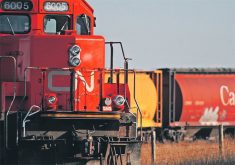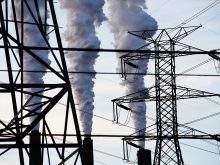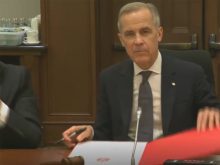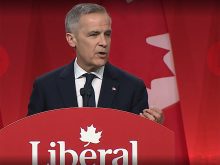Many Alberta farmers say program exemptions mean the new carbon tax isn’t as costly as some feared it would be
There has been much hand wringing in the farm community about carbon taxes but the experience hasn’t been too bad so far in the one prairie province that has one.
“The hit wasn’t as hard on a lot of producers as we thought it was going to be,” said Lynn Jacobson, president of the Alberta Federation of Agriculture.
Between the exemption for farm fuel and the ability to offset the new tax with carbon credits, many farmers are finding it to be a manageable and in some cases a revenue-neutral program.
Read Also

Using artificial intelligence in agriculture starts with the right data
Good data is critical as the agriculture sector increasingly adopts new AI technology to drive efficiency, sustainability and trust across all levels of the value chain.
“I think agriculture somewhat escaped or dodged a bullet,” he said.
Alberta introduced its carbon levy program on Jan. 1 this year. It is the only prairie province to have a program in place.
Links to other stories in this Special Report:
- Carbon taxation
- Carbon tax: A bitter pill for farmers
- Scientists find surprise in soil’s freeze-thaw cycle: nitrous oxide emissions
- Alfalfa, grasses top choices to aid in carbon sequestration
- Carbon tax Down Under went under
- Meeting EU emission standards can be a hurdle
- Can equipment makers do more to make a greener machine?
- Download a PDF of the complete Special Report here
The federal government says all provinces must implement a program by Jan. 1, 2018. Manitoba is working on one, while Saskatchewan plans to take Ottawa to court over the issue.
Saskatchewan Agriculture contends Ottawa’s forced tax would add $10 to $12 an acre in additional costs. Other studies have shown it could increase fertilizer costs alone by $19 per acre when fully implemented.
“That’s a significant hit for farmers,” said Robin Speer, executive director of the Western Canadian Wheat Growers Association.
He said farmers should be rewarded for sequestering carbon rather than penalized for their activities.
“It’s concerning any time new taxes are coming in. It’s just one more thing that’s going to affect the profitability of farming,” said Speer.
The federal government says provinces that do not have their own program will be forced to adopt one based on the model Alberta is using.
Alberta’s tax amounts to $20 per tonne in 2017, rises to $30 per tonne in 2018 and will eventually reach Ottawa’s mandated $50 per tonne by 2022.
Andrew Leach, associate professor at the Alberta School of Business, chaired the Alberta Climate Leadership Panel that recommended the lion’s share of what became Alberta’s carbon levy.
The big win for agriculture is that marked farm fuels are exempt from the tax.
Leach was disappointed the government decided to go that route because a farm that uses more fuel than a neighbouring farm is getting a bigger tax break.
“That’s sort of backwards,” he said.
Leach would have preferred a different type of subsidy program for farm fuel but he is pleased with the overall look of a program that was sensitive to the concerns of industries like agriculture.
“The biggest thing we were looking for in designing the policy was protecting trade-exposed industries,” he said.
In addition to getting a break on fuel, farmers can offset the costs of the tax by generating emissions credits, which can be sold to heavy emitters.
The credits are earned by implementing practices such as no-till farming and reduced fertilizer use.
Farmers have been earning credits since 2007 but the amount they are worth doubled to $30 per tonne with the implementation of the new levy.
“That doubling of their value gets them over the hurdle of being really interesting and economically viable for a lot of opportunities on farms,” said Leach.
Jacobson said the ability to earn carbon offsets will make the program a wash for some dryland farmers.
“I think we’re better off in some ways than other people,” he said.
However, he noted that farmers are still paying extra taxes on natural gas and propane and those costs can add up for heavy users, such as greenhouses and irrigated operations.
The province is allowing greenhouse operators to recoup up to 80 percent of the carbon levy during the next two years, keeping them competitive with their counterparts in British Columbia.
The Alberta Federation of Agriculture has been asking the government for a break for irrigators as well.
“They have been talking to us, so it leads me to believe that maybe they’re looking at something on that,” he said.
Speer said the tax will have a big impact on value-added operations. The Alberta Cattle Feeders Association estimates it will cost feedlot operations between $6 and $7 a head.
The other big concern for farmers was what impact the tax was going to have on fertilizer costs because fertilizer manufacturers are heavy users of natural gas.
Alberta’s fertilizer manufacturers had already been paying a carbon tax since 2007 under the province’s Specified Gas Emitters Regulation.
They will continue operating under that program until the end of 2017 when the province transitions to another program that is still in the works.
Leach said the government is very much aware that fertilizer is another trade-exposed industry and it doesn’t want to introduce a policy that will penalize local production at the expense of imports.
“You’re going to see a policy that protects against that,” he said.
Alberta has produced a document that states the direct cost of the tax on an average household with a couple and two children will be $338 in 2017 and $508 in 2018. An estimated 60 percent of households will get a full rebate due to their incomes.
There have been no estimates on what it would cost the average farm because there is too much variability in farm operations, said Leach.
Scott Hennig, vice-president of communications with the Canadian Taxpayers Federation, said the levy will result in a lot of hidden costs for farmers in the form of things like higher transportation costs.
“Even if you’re buying a new piece of machinery, it has got to get here. It’s not being manufactured in Olds or something like that,” he said.
Hennig said the tax will be built into everything farmers pay for including crop inputs.
“They’re planning on pulling a whole pile of money out of the economy,” he said.
The government estimates the levy will generate $3.85 billion over the next three fiscal years, all of which will be reinvested in the Alberta economy.















